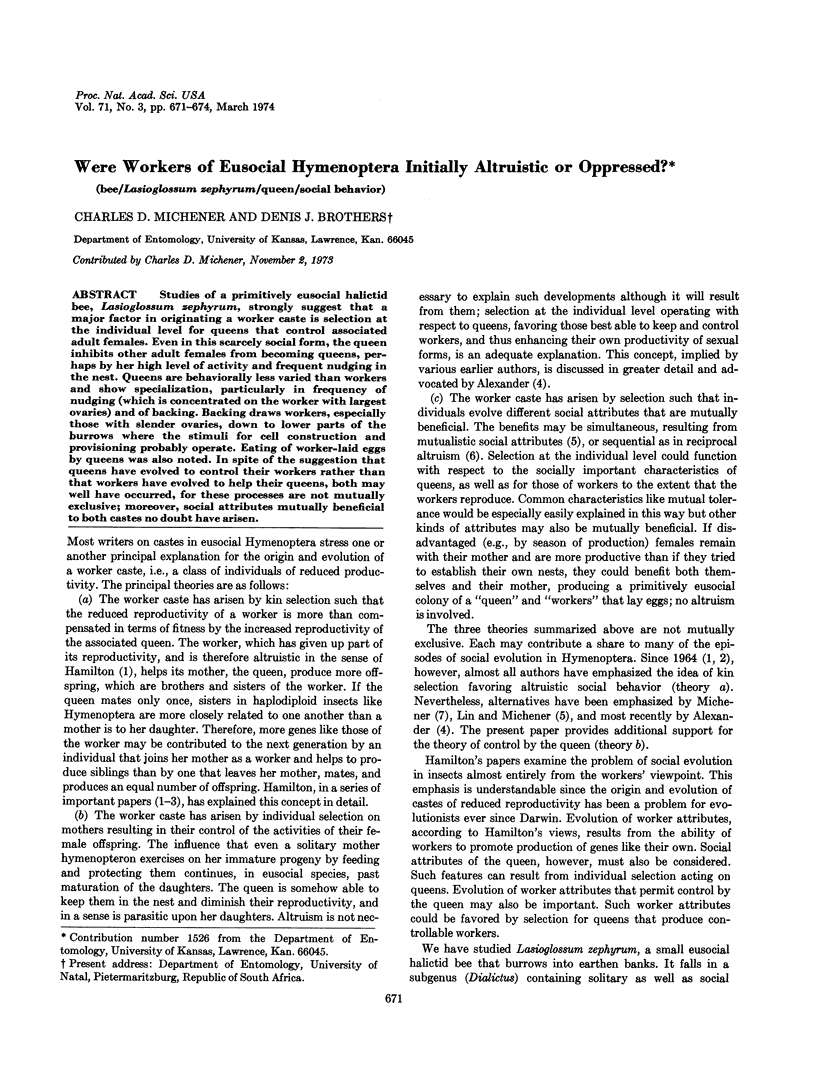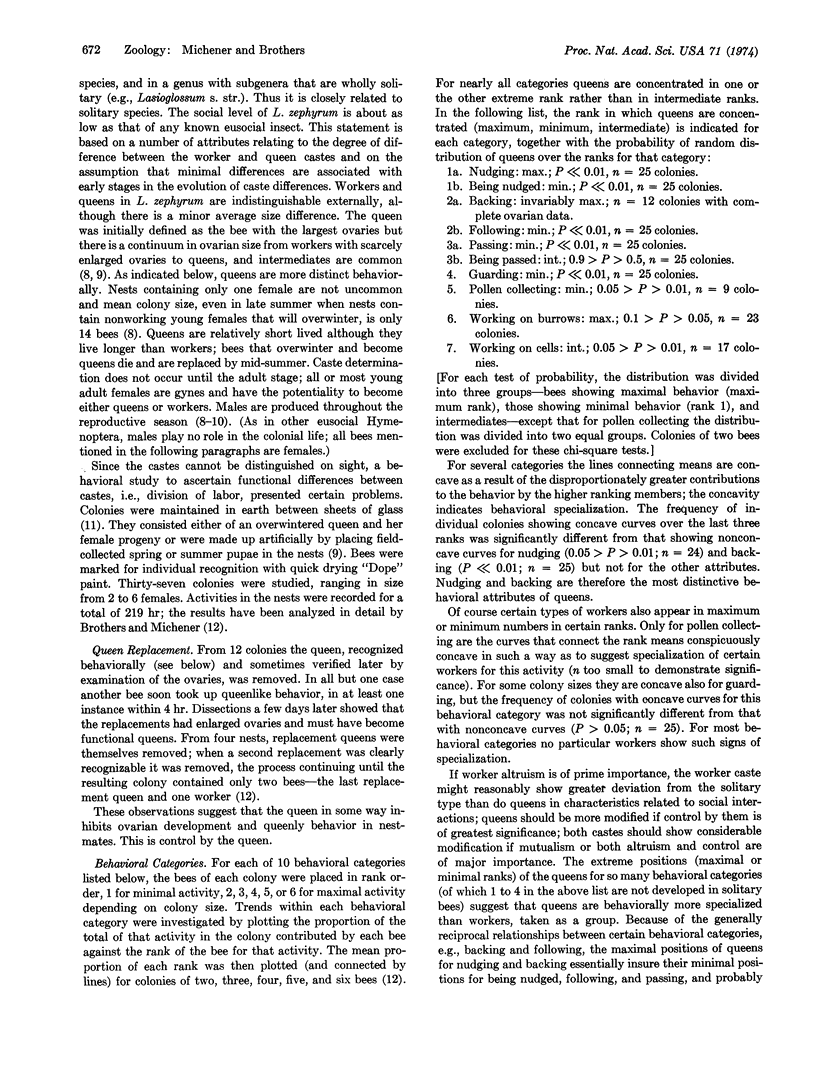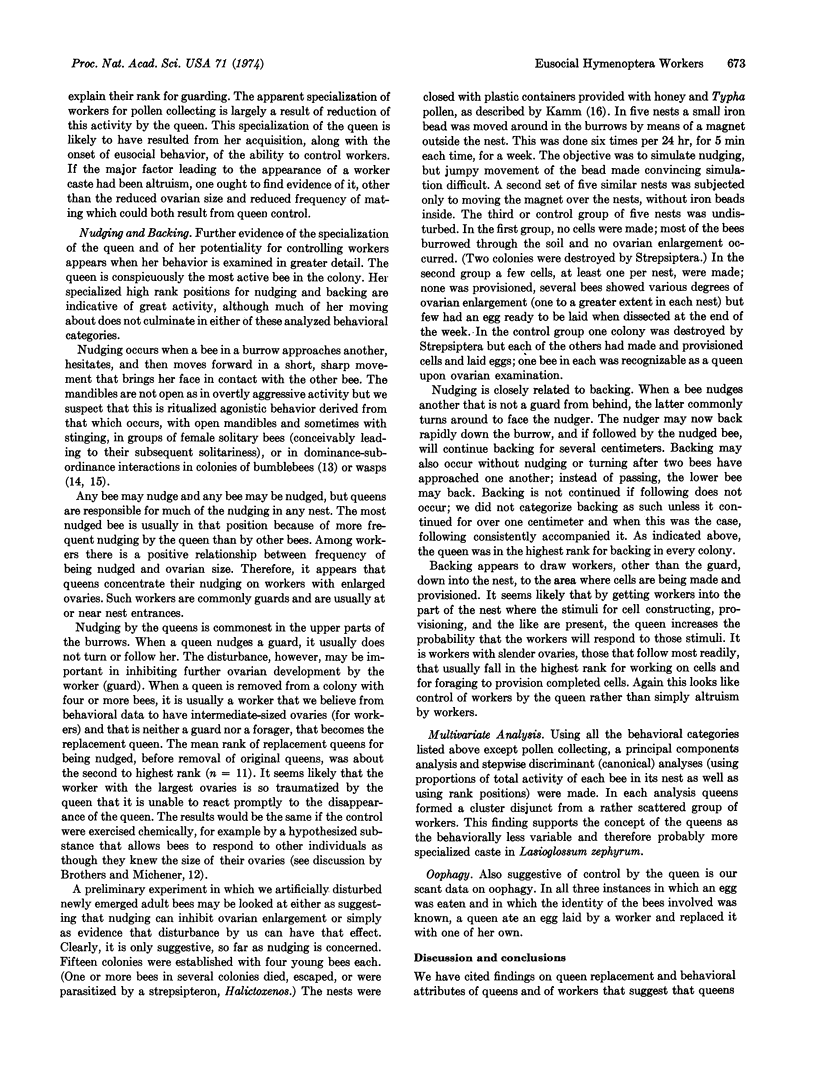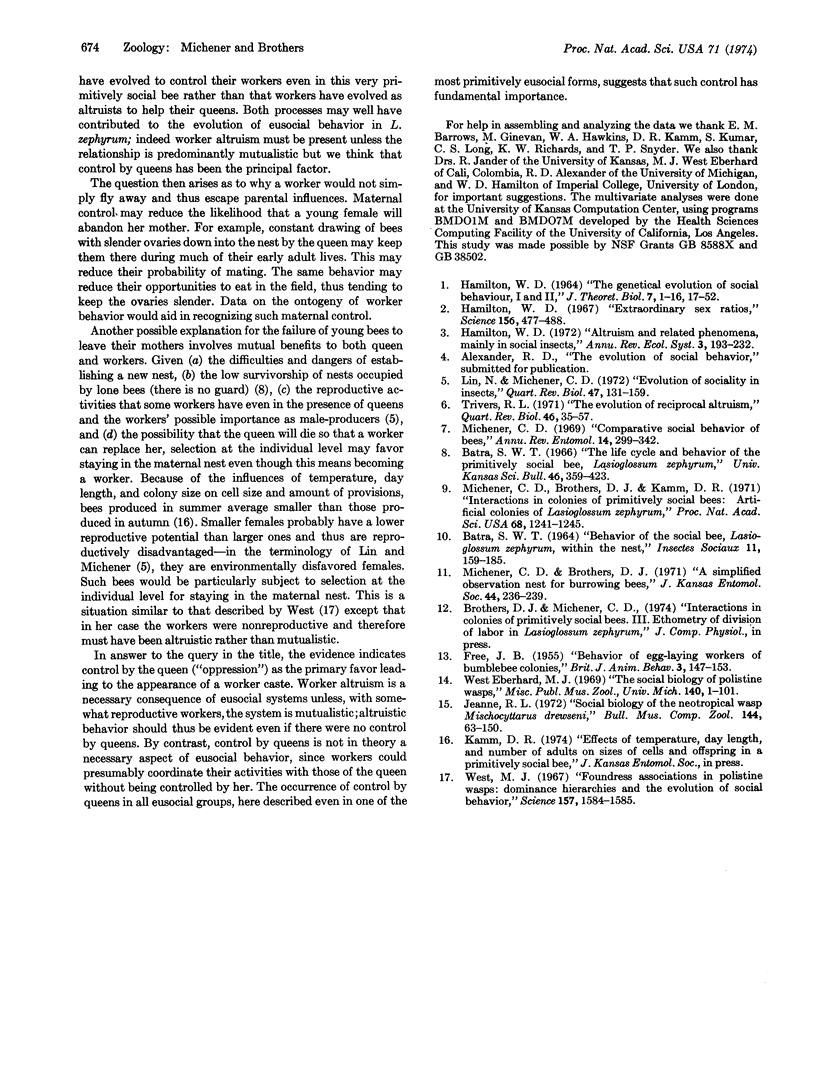Abstract
Studies of a primitively eusocial halictid bee, Lasioglossum zephyrum, strongly suggest that a major factor in originating a worker caste is selection at the individual level for queens that control associated adult females. Even in this scarcely social form, the queen inhibits other adult females from becoming queens, perhaps by her high level of activity and frequent nudging in the nest. Queens are behaviorally less varied than workers and show specialization, particularly in frequency of nudging (which is concentrated on the worker with largest ovaries) and of backing. Backing draws workers, especially those with slender ovaries, down to lower parts of the burrows where the stimuli for cell construction and provisioning probably operate. Eating of worker-laid eggs by queens was also noted. In spite of the suggestion that queens have evolved to control their workers rather than that workers have evolved to help their queens, both may well have occurred, for these processes are not mutually exclusive; moreover, social attributes mutually beneficial to both castes no doubt have arisen.
Keywords: bee, Lasioglossum zephyrum, queen, social behavior
Full text
PDF



Selected References
These references are in PubMed. This may not be the complete list of references from this article.
- Hamilton W. D. Extraordinary sex ratios. A sex-ratio theory for sex linkage and inbreeding has new implications in cytogenetics and entomology. Science. 1967 Apr 28;156(3774):477–488. doi: 10.1126/science.156.3774.477. [DOI] [PubMed] [Google Scholar]
- Hamilton W. D. The genetical evolution of social behaviour. II. J Theor Biol. 1964 Jul;7(1):17–52. doi: 10.1016/0022-5193(64)90039-6. [DOI] [PubMed] [Google Scholar]
- Michener C. D., Brothers D. J., Kamm D. R. Interactions in Colonies of Primitively Social Bees: Artificial Colonies of Lasioglossum zephyrum. Proc Natl Acad Sci U S A. 1971 Jun;68(6):1241–1245. doi: 10.1073/pnas.68.6.1241. [DOI] [PMC free article] [PubMed] [Google Scholar]
- West M. J. Foundress associations in polistine wasps: dominance hierarchies and the evolution of social behavior. Science. 1967 Sep 29;157(3796):1584–1585. doi: 10.1126/science.157.3796.1584. [DOI] [PubMed] [Google Scholar]


